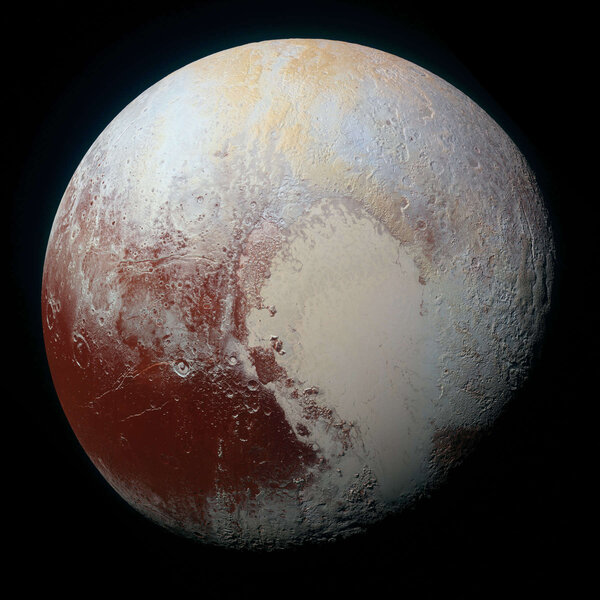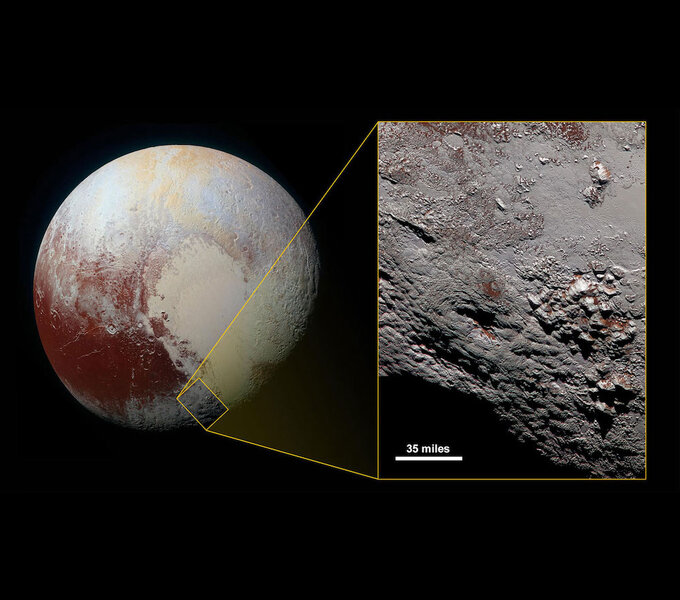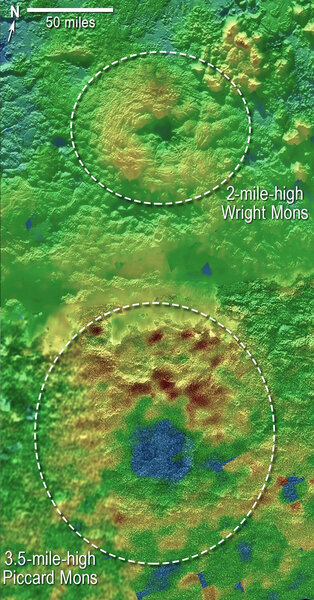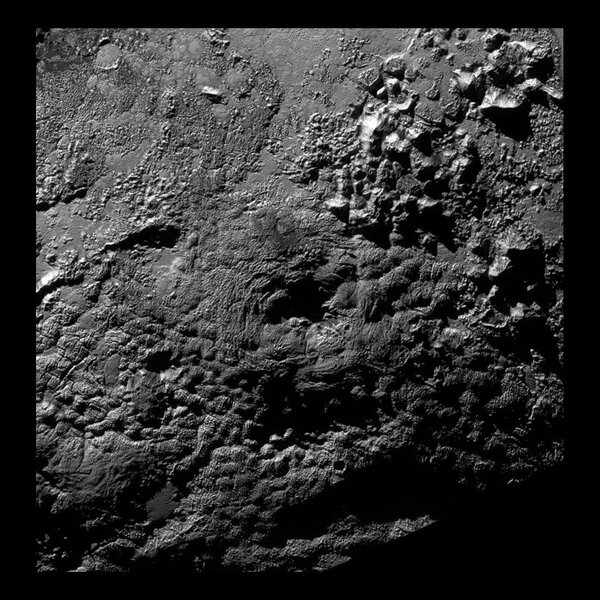Create a free profile to get unlimited access to exclusive videos, sweepstakes, and more!
Pluto may have once had huge cryovolcanic ice flows
Ice volcanoes on Pluto may have created weird, lumpy landscape.
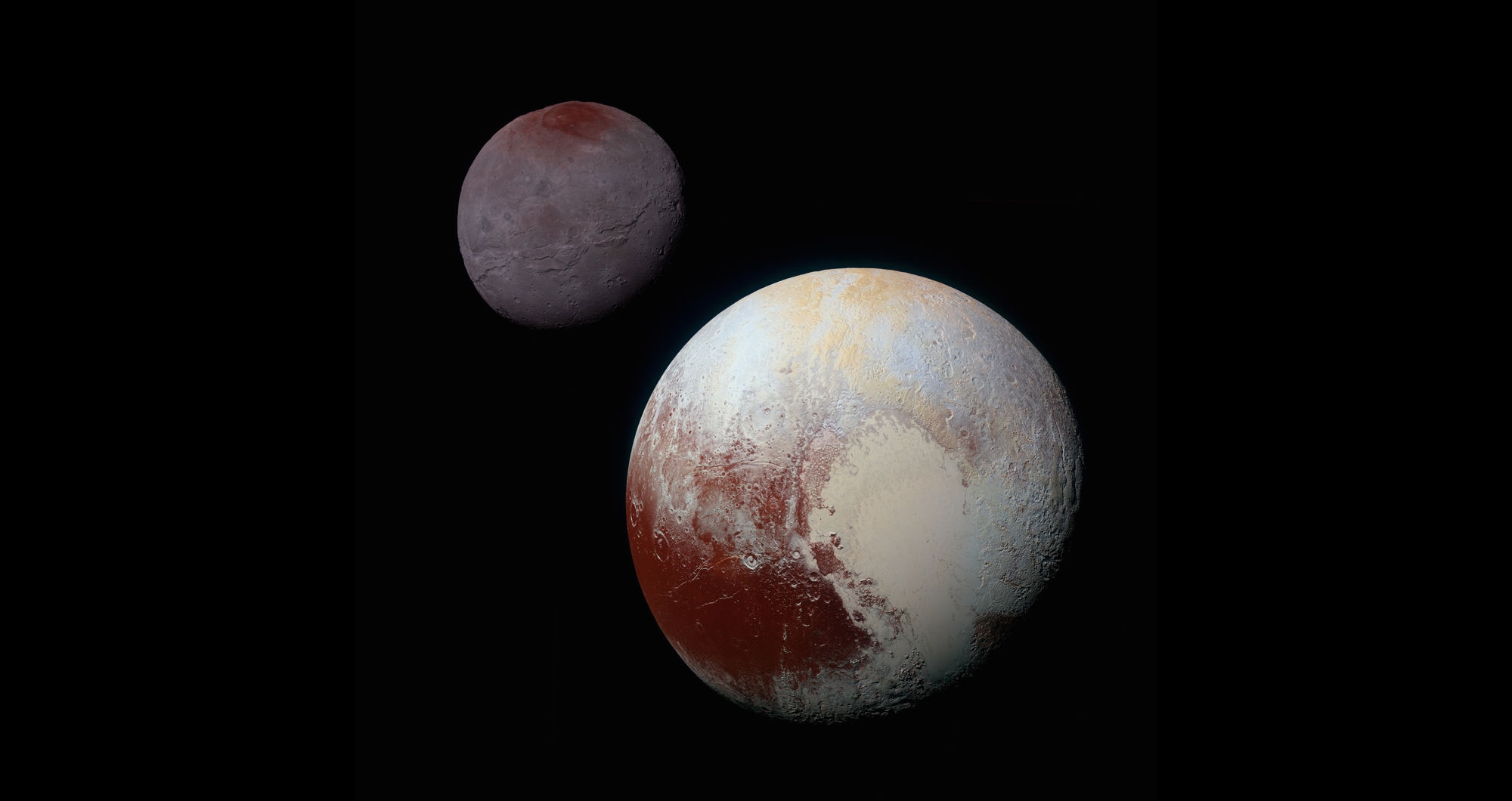
Of all the worlds we’ve seen up close in our solar system, Pluto may very well be the weirdest.
Pluto is small, just under 2,400 kilometers wide — much smaller than our Moon — and it’s made mostly of rock and ice, giving it a low density and weak gravity. It has an atmosphere, but not much of one. And it’s cold, with a surface temperature hovering around -230° C (-390° F). The surface is covered with frozen water ice, nitrogen ice, methane ice… it’s completely unearth-like.
Which is why it was something of a surprise to see what look like volcanoes on the surface.
On bodies like Earth, Jupiter’s moon Io, and Venus, the power for volcanoes comes from below, heat stored deep inside that causes warmer material to rise up and, sometimes, burst forth. Pluto is so small and far from the Sun that finding volcanic features is unexpected; the standard idea was that it froze solid long ago.
But New Horizons changed all that. When the spacecraft zipped past Pluto in 2015, it took images and spectra of the surface, mapping out most of one hemisphere in some detail. One of the most striking features was the huge, bright heart-shaped region called Tombaugh Regio. The western lobe of the heart is named Sputnik Planitia, and is covered in nitrogen ice, but, notably, not craters. That means it’s a young feature, repaved in geologically recent times, wiping out the craters that may have been there. At Pluto’s temperatures nitrogen ice is soft, and can flow like glaciers on Earth. Sputnik may have been a huge impact site that flooded with nitrogen, and features seen there indicate it’s still warmer than expected under it. That in turn means Pluto may yet have a source of subterranean heat.
Just to the southwest of Sputnik Planitia, right on its border, are two large mountains called Wright Mons and Piccard Mons. They look very much like calderas, volcanoes, and scientists wondered if they might be cryovolcanoes — cold volcanoes, ones that spit out water and other liquids instead of molten rock as volcanoes do on Earth.
Looking closely at high-resolution images and mineral maps taken by New Horizons, a team of planetary scientists has come up with a somewhat different idea [link to paper]. They think this entire region has, in the recent past, undergone huge amounts of cryovolcanism from many, many vents in the surface. As these vents spew out liquids that quickly freeze into ice they form mounds that can be up to 20 kilometers wide and several high. As these mounds formed and grew they would bump up against each other, merging or overlapping to form a wide-ranging hummocky, undulating surface. Some of them also merged together to create ring-shaped mounds with central depressions that look like singular volcanoes, but the resemblance is actually a coincidence.
That means, if they’re correct, that Wright and Piccard Montes (montes = plural of mons) are actually not singular caldera volcanoes but just a whole bunch of individual hills that lumped together to form ring-shaped structures.
The scientists have three main lines of evidence for this. One is that there are almost no impacts craters in that region, meaning the area is younger than terrain around it. Impacts happen over time, and if a particular area is old you’d expect to see them. If something happens like the upwelling of liquid water, it can fill in the craters. So this region to the southwest of Sputnik Planitia is young, certainly less than two billion years. Yes, that’s young to a planetary scientist.
The second is that the undulating hummocky hills are hard to explain as tectonic uplift, like mountains on Earth. They don’t form coherent patterns like ridges, and the scale is wrong. They’re not erosional either; as if a flat area had some sort of erosion that carved depression and left mounds behind. There’s no known mechanism for that.
The third is that the central depressions in Wright and Piccard don’t match what they’d look like if they were calderas. Volcanoes like that have huge chambers of liquid underneath. After an eruption, the chamber empties and the solid material above it collapses, leaving behind the iconic volcano shape. But the depressions in the two features are too steep-walled, and have hummocks in them similar to the surrounding area. The depression in Wright Mons doesn’t go deep enough, either.
Put this together, and perhaps they aren’t monolithic volcanoes. They’re coincidental annular hills created by multiple domes merging from many separate vents. Mind you, they’re big. Wright Mons is roughly 150 kilometers across and three high, while Piccard Mons is 225 km across and 7 high. That’s much more volume than Mt. Everest.
The amount of material needed to account for all this terrain (plutonain?) is a lot: At least 10,000 cubic kilometers of water must have been spewed out. That’s enough to fill a cube over 20 km on a side. So yeah, a lot. The scientists speculate this happened not just in many events but over multiple episodes as well.
Again, I’d be surprised if that weren’t a surprise, because unsurprisingly surprises are what we got from Pluto. And think on this: New Horizons flew past Pluto at 14 kilometers per second, meaning the entire close encounter only lasted a few hours. Imagine if we had an orbiter there! What would we learn if we had years of observations instead of hours?
